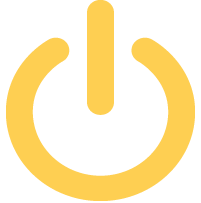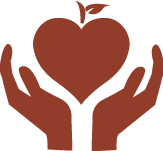Key Shifts in Science
In an increasingly scientific and technological society it is important that all students gain scientific literacy. Scientific literacy enables people to use scientific principles and processes to make personal decisions and to participate in discussions of scientific issues that affect society (National Research Council [NRC], 1996). The Minnesota science standards and benchmarks describe a connected body of science and engineering knowledge acquired through active participation in science experiences. These experiences include hands-on laboratory activities rooted in scientific inquiry and engineering design.
The 2009 Minnesota Science Standards were primarily based on the Benchmarks for Science Literacy (American Association for the Advancement of Science [AAAS], 1993) and the National Science Education Standards (NRC, 1996). Resources for teaching the science standards are posted on the website Frameworks for the Minnesota Mathematics and Science Standards.
Recent science education research, summarized in A Framework for K-12 Science Education (NRC, 2012), has identified three “dimensions” that outline the knowledge and skills that all students should learn:
· Dimension 1: Scientific and engineering practices used by professionals and needed by students
· Dimension 2: Crosscutting concepts that have applications across science disciplines
· Dimension 3: Core ideas in the science and engineering disciplines
These should be woven together throughout science curricula, instruction and assessments.
The following are key shifts called for by Minnesota’s science standards:
Science shift toward learning for all students
We find large achievement gaps in science based on race, economic status, and geographic location. The science standards set a minimum level of rigorous science learning that all students should achieve to become science literate. To achieve this goal, students must have an equitable opportunity to learn the science standards and benchmarks by providing adequate instructional time and resources. Teachers must have the disposition that all students can learn science and provide instruction targeted to their individual needs. The instruction should build from their life experiences and prior knowledge to engage interest and move them to science concepts and skills.
The Minnesota Frameworks website has a Best Practices section (under the Resources Tab) devoted to Science for All and how that lens applies to instruction for certain students. The Framework for K-12 Science Education (NRC, 2012) chapter 11 on Equity and Diversity highlights equity issues that relate to students’ educational experiences and outcomes in science.
Science shift toward an emphasis on learning progressions
The science standards promote equity by describing a progression of learning science concepts and skills through the grade levels. This progression provides efficiency in science instruction by reducing unnecessary repetition of instruction and gaps in learning and also aids students that move between schools and districts. The benchmarks set a level of accomplishment that students should master by the end of that grade. In many cases students will need additional instruction (scaffolding) before that grade or unit of instruction to prepare the students. A resource that is helpful in gaining increased understanding of the flow of ideas from grade to grade is the Atlas of Science Literacy (AAAS, 2001, 2007).
More recent research on learning progressions informed Dimension 3: Disciplinary Core Ideas of A Framework for K-12 Science Education, chapters 5 - 7. The criteria that were used to choose core ideas include: key organizing principles in a discipline, related to interests and experiences of students, and ideas that are teachable and learnable over multiple grades.
The Crosscutting Concepts (Crosscutting Concepts) link concepts across the domains of science. They include Cause and Effect, Structure and Function, Systems, and Matter and Energy. The Framework identifies learning progressions in all three dimensions to demonstrate how each is developed over the K-12 grade span.
The research is also encouraging teachers to use interesting phenomena that engage students in developing explanations and thus help students learn science concepts. Through a carefully chosen series of phenomena teachers develop a storyline that help students develop and refine mental models that gain in sophistication.
Science shift toward inquiry processes
In order to become scientifically literate, students must be able to understand both science concepts and the processes of science. They learn to use scientific reasoning and critical thinking as they develop their understanding of science.
“Engaging students in inquiry helps students develop:
· Understanding of scientific concepts.
· An appreciation of “how we know” what we know in science
· Understanding of the nature of science
· Skills necessary to become independent inquirers about the natural world.
· The dispositions to use the skills, abilities and attitudes associated with science.” (NRC, 1996)
Hence inquiry should be used as an instructional strategy to learn science concepts and also to teach students the skills of science investigations.
Science shift toward inclusion of engineering in science instruction
Substantive engineering design process standards have been incorporated throughout the K-12 science standards, consistent with leading states’ efforts to address the increased importance of STEM (science, technology, engineering and math in an integrated way) in our modern scientific world. Technology, engineering and information literacy standards are found in “The Nature of Science and Engineering” strand.
Engineering activities and phenomena can provoke interest by students and science content concepts and skills can be built from the engineering design activities. Engineering can also serve as reinforcement and extension of science concepts by applying them to real-life situations.
Science shift toward the integration of inquiry and engineering design with content
The content and skills in The Nature of Science and Engineering strand are not intended to be taught as a stand-alone unit or an isolated course, but embedded and used in the teaching, learning and assessment of the content in the other strands.
As an example, an arc of lessons aimed a particular science concept or standard may include an investigation of a phenomena in nature which leads students to develop a scientific explanation. The teacher helps the students draw out the science concept and then gives the students an engineering challenge activity that applies that concept.
Dimension 1: Science and Engineering Practices of A Framework for K-12 Science Education describes the major practices that scientists and engineering employ in their work. Students should develop the ability to use these practices for their own investigations and also learn how professionals use these practices. These are called practices rather than inquiry skills since the term inquiry has taken on many different interpretations over time.
Science shift toward the integration of literacy
The Literacy Standards in Science were adopted in 2010 as a component of the English Language Arts standards. These standards provide the basis for developing literacy skills that can support the learning of science concepts and skills. They support the understanding of text information in many forms, such as graphical, visual and online, and the evaluation of text information from many sources. They also develop communication skills and reasoning from evidence. The Minnesota Frameworks website has a Best Practices section on Literacy in Science which ways in which integration can support the learning of knowledge and skills in both literacy and science.
One avenue for integration is the role of evidence in reasoning for both science and literacy. Science education research emphasizes the use of evidence from observations and experimental work in making claims about how nature operates. The literacy lens looks at the evidence found in texts.
References
American Association for the Advancement of Science (AAAS). (2001). Atlas of science literacy vol. 1. Washington D.C. Author.
American Association for the Advancement of Science (AAAS). (2007). Atlas of science literacy vol. 2. Washington D.C. Author.
National Research Council (NRC). (1996). National science education standards. Washington, DC: National Academies Press.
National Research Council (NRC). (2012). A framework for K-12 science education: Practices, crosscutting concepts, and core ideas. Washington, DC: The National Academies Press.







